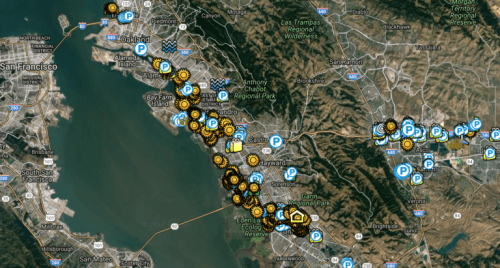
Clean local energy is winning in 2017: A year-end review from the Executive Director
Worldwide interest in renewables remains strong, and the Clean Coalition is accelerating successes at the local level.
As we come to the end of a tumultuous political year with a climate-denying federal administration, it would be easy to feel discouraged. But worldwide interest in renewables remains strong, and the Clean Coalition is accelerating successes at the local level.
With the world moving in the direction that the Clean Coalition has been pushing over its 9-year existence, and several passionate and talented additions to theClean Coalition team, our achievements are on the rise.
We kicked off 2017 by partnering withEast Bay Community Energy(EBCE), part of California’s rapidly expanding Community Choice Energy market, to develop a program for deploying more clean local energy in Alameda County. OurSolar Siting Surveyshows enormous opportunity for solar deployment in the region, and the innovative feed-in tariff (FIT) withMarket Responsive Pricingwe designed for EBCE includes aDispatchability Adderto incentivize energy storage.
ThePeninsula Advanced Energy Community (PAEC) Initiativecontinues to flourish. PAEC – a California Energy Commission (CEC) collaboration – is streamlining policies and showcasing projects that facilitate clean local energy and other advanced energy solutions like energy efficiency, energy storage, and electric vehicle (EV) charging infrastructure. PAEC is a model for communities across the country that want to reap the trifecta of economic, environmental, and resilience benefits delivered by Community Microgrids, Solar Emergency Microgrids, and more.
In March, the CEC selected the Clean Coalition to receive a grant for ourValencia Gardens Energy Storage project. In collaboration with partners like Pacific Gas & Electric, the California Independent System Operator (CAISO), and the City of San Francisco, the Clean Coalition is leading this project to add grid-scale energy storage to the roughly 800 kilowatts of rooftop solar that is already interconnected to the distribution feeder around the Valencia Gardens Apartments, a large low-income and senior housing apartment complex near downtown San Francisco.
Our work toexpand EV charging infrastructure in Palo Altomoved forward with the unveiling of new solar carport installations atop four City-owned parking structures. The solar carports and the EV charging infrastructure were possible only because of the Palo Alto FIT, which the Clean Coalition helped establish nearly five years ago.
Clean Coalition leadership on renewable energy and grid modernization policy continued this year withover 50 public filingsin regulatory proceedings. Importantly, we were very active in numerous associated working groups.
Among the Clean Coalition’s numerous policy wins was the progress we made on our campaign to eliminate the massive (3 cents/kilowatt-hour) market distortion thatTransmission Access Charges (TAC)steal from local renewables in investor-owned utility service territories, including from Community Choice Aggregators. This legislative cycle featured the Clean Coalition-sponsoredSenate Bill 692to force CAISO to fix the TAC distortion by implementing a consistent statewide “user-pays” approach. In response, CAISO started theReview TAC Structure Stakeholder Initiativethis summer, which is essentially based on theClean Coalition’s proposed TAC fix. The Clean Coalition is leading a consortium of nearly 100 supporting organizations to ensure our proposal is adopted.
Read more about our policy wins >>
The Clean Coalition finished the year with major winsfor clean local energy. Our studies showing thatsolar+storage can cost-effectively replacethe proposed Puente Power Project natural gas plant in Oxnard and the Ellwood Peaker Plant near Santa Barbara were instrumental in the CEC’s denial of Puente and the California Public Utility Commission’s rejection of Ellwood. As a result, many analysts are questioning whether another gas plant will ever be built in California.
Our work was recognized this year by thePeople’s Action for Clean Energy, with their 2017Judi Friedman Clean Energy LeadershipAwardfor bold and creative leadership in the field of clean energy. Since 2009, the Clean Coalition has achieved meaningful results in advancing renewable energy and a modern grid, facilitating more than 2 gigawatts of clean local energy program capacity – enough to provide peak power to about 2 million American homes.
Thank you for continuing to support the Clean Coalition and its pursuit of making clean local energy accessible now. We wish you a happy holiday season and look forward to another successful year.
Craig Lewis
Founder and Executive Director



